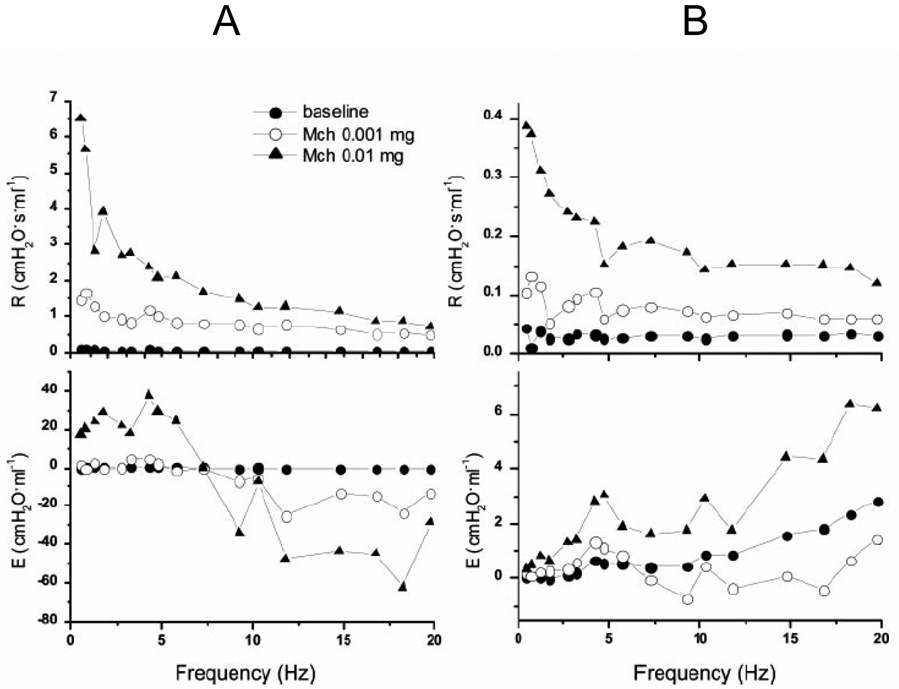Figure 5.
Representative impedance spectra from two asthmatic subjects measured through a wedged bronchoscope at baseline and following two different doses of methacholine administration through the instrument channel of the bronchoscope. Note how bronchoconstriction greatly increases the negative frequency dependence of the real part of impedance (R) in both subjects, indicative of an increase in the heterogeneity of regional time-constants throughout the lung. Note, also, how the product of angular frequency with the imaginary part of impedance (E) varies between the two subjects. Subject A has a well defined resonant frequency (E = 0) indicating that the compliance of the airways did not play a major role in the way the lung responded to challenge. Subject B, in contrast, has an E that increases progressively with frequency indicative of central airway shunting, possibly due to the airway narrowing in this subject being concentrated in peripheral airways that prevented the applied oscillations in flow from moving beyond the airways and into the parenchymal regions of the lung (reproduced with permission from (Kaminsky et al., 2004).

